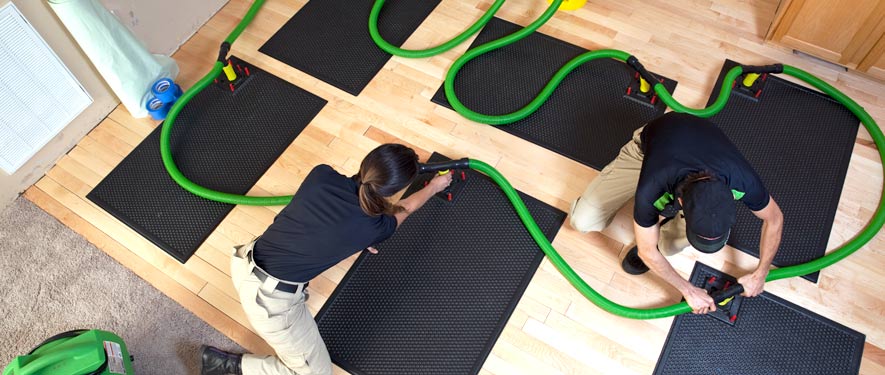
Step 4: Drying and Dehumidification
Our Water Damage Restoration Process
While some water damage can be easily detected, its necessary to dry and dehumidify the problem areas. The first thing we do is to remove all excess water and then the second part of our process would be to perform the dehumidification and drying of the room because even though the floors and walls visually appear to be dry, upon closer inspection the areas will be cool to the touch and that is a clear indication that their is still the presence of water. The majority of building materials are porous and absorbs water easily especially if exposed to water for long periods of time and not properly dried will not only damage the materials but will also encourage the growth of mold which is expensive to remove.
The use of dehumidifiers reduces the chances of mold growth and potentially saves some of the building materials by speeding up the overall drying process. Depending on how the water damage occurred either from a busted pipe or weather related the moisture levels in room could vary and especially if the room is exposed to the natural elements. All of these factors will make the room more difficult to dry. Moisture readings are constantly checked and the air flow from the drying equipment in the room is adjusted so as to prevent further damage. This two step approach can not only save the building materials but also the furniture within the room.
Drying / Dehumidification
Our Professionals will use room measurements, temperature, and relative humidity to determine the optimal number of air movers and dehumidifiers to dry your home or business. We’ll carefully monitor the progress using moisture meters until the materials return to acceptable drying goals.
- Use Dehumidification Equipment
- Use Monitoring Equipment to Track Progress
Monitor Floor and Walls
We check the moisture levels to monitor the drying process.
- Monitor Floors
- Monitor Walls
Drying Equipment
- Industrial-grade dehumidifiers help prevent secondary water damage like swelling and warping of floors, walls, and furniture.
- High-speed air movers create airflow across walls, carpets, pads, and furniture, which accelerates the evaporation of moisture.






 24/7 Emergency Service
24/7 Emergency Service


